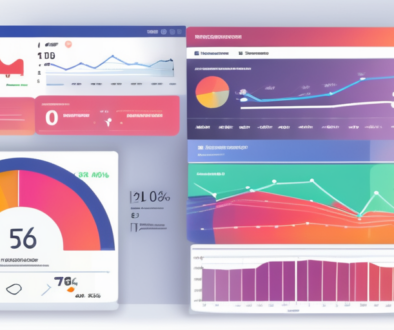Creative Paid Ad Ideas to Boost Small Business Visibility
Running paid ads can be a game-changer for small businesses. In today’s digital age, online advertising is a powerful tool that can help you reach a wider audience and drive more traffic to your website. However, understanding the importance of paid ads and crafting effective ad strategies is crucial for achieving success in this competitive landscape. In this article, we will explore the top paid ad ideas for small businesses and provide valuable insights on how to maximize the impact of your advertising efforts.
Understanding the Importance of Paid Ads for Small Businesses
Before diving into the different types of paid ads, it’s essential to understand the role they play in business growth. Paid ads offer a cost-effective way to promote your products or services among a targeted audience. By investing in paid advertising, small businesses can level the playing field with larger competitors and increase their brand visibility.
Moreover, paid ads allow you to reach potential customers at the right time and place. With advanced targeting options, you can narrow down your audience based on demographics, interests, and online behaviors. This ensures that your ads are displayed to the right people, increasing the chances of driving conversions and generating revenue.
Small businesses can also benefit from the flexibility that paid ads offer. Whether you want to increase website traffic, boost sales, or promote a new product, paid advertising platforms provide various ad formats to suit your specific goals. From search engine ads that appear at the top of search results to display ads on websites and social media platforms, the possibilities are endless.
Now that we’ve established the importance of paid ads, let’s dive into the different types that small businesses can leverage to reach their target audience effectively.
Different Types of Paid Ads
Social Media Advertising
Social media platforms like Facebook, Instagram, and Twitter offer powerful advertising opportunities for small businesses. With billions of active users, these platforms allow you to target specific demographics and tailor your ads to suit their preferences. From sponsored posts to carousel ads, social media advertising enables you to showcase your products or services in a visually appealing and engaging manner.
Moreover, social media advertising provides detailed analytics that help you track the performance of your ads in real-time. This data allows you to make informed decisions about your advertising strategy, such as adjusting targeting parameters or refining your ad creative to improve results. By leveraging the insights gained from these analytics, you can continuously optimize your campaigns for better ROI.
Search Engine Marketing
Search engine marketing (SEM) involves bidding on keywords related to your business to display your ads at the top of search engine results pages. Platforms like Google Ads and Bing Ads offer sophisticated targeting options that ensure your ads are displayed to users actively searching for products or services similar to yours. By optimizing your ad copy and targeting relevant keywords, you can increase your click-through rates and drive qualified leads to your website.
In addition, SEM allows you to track the performance of your ads through conversion tracking, which provides valuable insights into the actions users take after clicking on your ad. This information can help you understand the effectiveness of your campaigns and make data-driven decisions to improve your advertising efforts further.
Display Advertising
Display advertising involves placing image-based or text-based ads on websites within a network. Platforms like Google Display Network and programmatic advertising networks allow you to reach a vast audience by displaying your ads on popular websites. Display ads can be highly effective in increasing brand awareness and driving website traffic, especially when combined with compelling visuals and enticing ad copy.
Furthermore, display advertising offers retargeting capabilities, which enable you to show ads to users who have previously visited your website but did not convert. By staying top-of-mind with these potential customers as they browse the web, you can increase the likelihood of them returning to complete a purchase or take a desired action, ultimately boosting your conversion rates.
Crafting Effective Paid Ad Strategies
Identifying Your Target Audience
The success of your paid ads heavily relies on how well you understand your target audience. Take the time to conduct market research and analyze your existing customer base. Identify their demographics, interests, motivations, and pain points. This information will help you create audience segments and tailor your ad campaigns to resonate with each group individually.
Moreover, delving deeper into psychographic data can provide valuable insights into the lifestyle choices, values, and behaviors of your target audience. Understanding the emotional triggers that drive consumer behavior can enable you to craft compelling ad messaging that strikes a chord with your potential customers on a more personal level.
Setting Clear Advertising Goals
Before launching your paid ad campaigns, it’s crucial to define your advertising goals. These goals can vary, from increasing brand awareness and driving website traffic to boosting conversions and sales. By setting clear goals, you can measure the success of your campaigns and make data-driven decisions for optimizing your ad strategies in the future.
In addition to overarching goals, setting specific key performance indicators (KPIs) for each campaign can provide a more granular view of performance. Whether it’s tracking click-through rates, conversion rates, or return on ad spend (ROAS), establishing KPIs allows for a more nuanced evaluation of the effectiveness of your paid ad efforts.
Choosing the Right Ad Format
The choice of ad format depends on your target audience and the objectives of your campaigns. Experiment with different formats such as text ads, image ads, video ads, or interactive ads. Test and optimize your ad creatives to find the formats that resonate the most with your audience and drive the desired actions.
Furthermore, consider the user experience across various devices when selecting ad formats. With the increasing prevalence of mobile browsing, ensuring that your ad creatives are optimized for mobile devices can significantly impact the performance of your campaigns. Responsive design and mobile-friendly formats can enhance engagement and drive better results from your paid advertising efforts.
Budgeting for Your Paid Ads
When it comes to budgeting for your paid ads, strategic planning is key to ensuring that you’re maximizing the impact of your investments. It’s essential to carefully consider various factors such as your overall marketing budget, business goals, and target audience demographics. By taking a holistic approach to budget allocation, you can better align your paid advertising efforts with your overarching marketing strategy.
One effective approach is to conduct a thorough analysis of your past advertising performance to identify trends and patterns that can inform your budgeting decisions. By leveraging data-driven insights, you can make more informed choices about how to allocate your ad spend for optimal results. Additionally, consider setting aside a portion of your budget for testing new strategies and tactics to continuously refine and improve your paid advertising campaigns.
Determining Your Ad Spend
Allocating a budget for your paid ads is crucial to ensure that you’re getting the most out of your investments. Consider your overall marketing budget and determine how much you’re willing to spend on paid advertising. Start with a conservative budget and gradually increase it as you measure the performance and effectiveness of your campaigns.
Maximizing ROI on a Limited Budget
Even with a limited budget, there are strategies you can employ to maximize your return on investment (ROI). Focus on targeting niche audiences with higher conversion potential rather than casting a wide net. Optimize your ad campaigns regularly, experiment with different ad formats, and leverage audience targeting options to make the most of your budget.
Measuring the Success of Your Paid Ads
Key Performance Indicators for Paid Ads
Tracking the performance of your paid ads is vital for understanding their effectiveness and making data-driven decisions. Key performance indicators (KPIs) such as click-through rates (CTR), conversion rates, cost per click (CPC), and return on ad spend (ROAS) provide insights into the performance and profitability of your campaigns. Regularly analyze these metrics to identify areas for improvement and optimize your ad strategies accordingly.
Moreover, it’s crucial to delve deeper into the data to uncover valuable insights. For instance, analyzing the time of day when your ads perform best can help you schedule your campaigns more effectively. Understanding the devices or platforms where your ads are most successful can guide your targeting strategies. By segmenting your audience based on demographics or behavior, you can tailor your ads for better engagement and conversion rates.
Adjusting Your Strategy Based on Performance
Based on the performance of your paid ads, be prepared to make changes and adjustments to your strategies. If certain ad formats are performing exceptionally well, allocate more budget towards them. If certain targeting options are yielding poor results, refine your audience segments. Continuously monitor and optimize your campaigns to ensure that you’re maximizing the effectiveness of your paid ad efforts.
In addition to adjusting your ad content and targeting, consider experimenting with different ad placements and ad copy variations. A/B testing can provide valuable insights into what resonates best with your audience. By testing different visuals, calls-to-action, and messaging, you can refine your ads to drive better results. Remember, the digital advertising landscape is constantly evolving, so staying agile and willing to adapt is key to long-term success.
Conclusion
Paid ads can open up endless possibilities for small businesses in terms of reaching a wider audience, increasing brand visibility, and driving conversions. By understanding the importance of paid ads, leveraging the different types available, crafting effective ad strategies, and measuring their success, small businesses can thrive in the online advertising landscape. With careful planning, budgeting, and continuous optimization, you can harness the power of paid ads to propel your small business to new heights of success.



